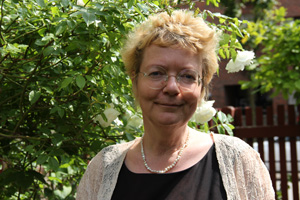From an artist’s precarious life
The arson attempt on Muhammed cartoonist Lars Vilks’ art-construction Nimis. A new opera portrays the artist as unfeeling and an easy prey for totalitarian ideas.
By Helle Merete Brix, 3. of December 2016.
Translation: Geoffrey Cain
”It feels fantastic. So many people feel offended. It’s obviously one the world’s great artistic constructions”.
It was autumn and I was fighting my way through Stockholm’s rain and wind on my way to Rotundan, the lovely little theatre in the city’s operahouse.
I was bent on seeing and hearing composer Roger Assar Johansson’s and political scientist and poetess Naima Chahbouns’ short opera ”Jane”, the story of the American Colleen LaRose. Better known as Jihad Jane, an ordinary housewife who turned terrorist. In 2010 she was sentenced to ten years in prison for having colluded with others to assassinate the Swedish art historian and Muhammed cartoonist Lars Vilks who is on Al Qaeda’s death list. Vilks was also the target of the terrorist attack on a culture house in Copenhagen in February 2015.
According to the charge against her Jane had received and accepted orders to kill Lars Vilks in a manner that would ”scare the infidel world”So now I had a chance to see Lars Vilks as a character in a play and I wasn’t going to miss it. The art work he talks about that has offended so many is of course the ”Roundabout Dog”. The ”dog” is Vilk’s portrayal of the prophet Muhammed, which subsequently brought a fatwa down on him that has forced him to live under threat of death for nine years.
Multiculti sweet-talk and serious opposition
The tale of Jihad Jane’s road to terrorism takes twenty minutes to enact on stage and seems to portray her as a noble freedom fighter combating discrimination against Muslims. But unfortunately she ends up taking the wrong road. In the scenes with Lars Vilks he is prone to declaiming pompous one-liners like ”a vaccine against multiculti-ism” and “my art is a defence of democracy”.
The critical journalist that enquires how it feels to have set the world on fire with the Roundabout Dog, asks him whether earning money at the expense of others should rather be seen as criminal.
And more in the same vein: ”Rabble-rousing against minorities, is that democracy?”.
Stage Ladonia and real Ladonia
Ladonia, the independent republic Vilks proclaimed in the famed nature reserve Kullen in 1996 has also a role in the opera. (One can google Ladonia on the internet and apply for citizenship.) On stage the Ladonia-dwellers wear half masks and chant slogans like ”foreceful resistance”, making it difficult not to see the insinuation that it’s all about an unpleasant totalitarian movement. But for anybody who knows the least little bit about Ladonias hippy-like state, it’s impossible to see any resemblance between the stage Ladonia and the real Ladonia.
I left the opera house with a feeling of relief that Vilks, who had told me about the performance, came too late to get tickets to it. He had been unjustly vilified, and I couldn’t shake off the composer’s unctuous words in the printed programme:
”We live in a very complex world that’s difficult to see in perpective. A world in which we oversimplify reality, which makes it all the more important for art to function act as a counterweight”.
The arson attack on Nimis
On the 24th of November Vilks’ famous giant scultpure Nimis on Kullen was on fire again, and The Tower of the Winds – one of the four sculptures in wood that Nimis is composed of – was burned to the ground. It was deliberate, thinks Vilks, and the police agree. Due to Nimis’ location in in a nearly inaccessible part of Kullen the fire was fought both on land and from the sea.
”One can’t discount the idea that it was probably because of the Roundabout Dog, but there can be a lot of other people who are dissatisfied with the cost of surrounding Vilks with bodyguards, and that sort of thing”, Vilks explains to me.
It’s not the first time somebody has tried to burn down Nimis since Vilks started building it in 1980. It’s been set on fire three times, says Vilks.
And a fourth time could have been a disaster, because somebody had put an incendiary bomb under Nimis, and it was primed to go off at a certain time. Fortunately it was discovered by a group of children from a Danish school who were out on a day-trip with their teacher.
Security
Will the fire have any influence on the massive security arrangements safeguarding Vilks? It’s possible.
”I went out to have a look at Nimis only a week ago”, says Vilks, in the aftermath of the attack on the satirical magazine Charlie Hebdo and the attack on the Cultural Centre in Copenhagen which targetted Vilks. Since then he has constantly been on the move from one safe house to another.
This means of course that he now won’t be able to do repairs on Nimis as he used to when he lived nearby. Interestingly enough Nimis has become a big tourist attraction in the course of the years and is known all over Scandinavia. But many Swedes resent it, and Vilks explained things to me like this:
”Despoiling a nature reserve is for many Swedes just as serious as drawing the prophet Muhammed as a dog on a roundabout.” Regarding the arson attack he says:
”The sculpture is more interesting now. The fire has become part of it.”
But why then the renewed interest just now? Vilks says it’s due to he best seller written about him by the Swedish journalist Niklas Orrenius, ”The shootings in Copenhagen” in which Vilks plays a leading role.
